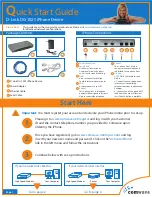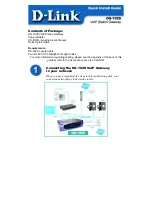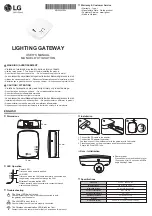
Chapter 13 VPN
LTE6100 User’s Guide
97
distinguish different incoming SAs and you can select between different encryption algorithms,
authentication algorithms and key groups when you configure a VPN rule. The ID type and content
act as an extra level of identification for incoming SAs.
The type of ID can be a domain name, an IP address or an e-mail address. The content is the IP
address, domain name, or e-mail address.
13.3.7.1 ID Type and Content Examples
Two IPSec routers must have matching ID type and content configuration in order to set up a VPN
tunnel.
The two LTE Devices in this example can complete negotiation and establish a VPN tunnel.
The two LTE Devices in this example cannot complete their negotiation because LTE Device B’s
Local ID type is IP, but LTE Device A’s Remote ID type is set to E-mail. An “ID mismatched”
message displays in the IPSEC LOG.
13.3.8 Pre-Shared Key
A pre-shared key identifies a communicating party during a phase 1 IKE negotiation (see
for more on IKE phases). It is called “pre-shared” because you have to share it
with another party before you can communicate with them over a secure connection.
Table 41
Local ID Type and Content Fields
LOCAL ID TYPE= CONTENT=
IP
Type the IP address of your computer.
DNS
Type a domain name (up to 31 characters) by which to identify this LTE Device.
Type an e-mail address (up to 31 characters) by which to identify this LTE
Device.
The domain name or e-mail address that you use in the Local ID Content field
is used for identification purposes only and does not need to be a real domain
name or e-mail address.
Table 42
Matching ID Type and Content Configuration Example
LTE Device A
LTE Device B
Local ID type: E-mail
Local ID type: IP
Local ID content: [email protected]
Local ID content: 1.1.1.2
Remote ID type: IP
Remote ID type: E-mail
Remote ID content: 1.1.1.2
Remote ID content: [email protected]
Table 43
Mismatching ID Type and Content Configuration Example
LTE DEVICE A
LTE DEVICE B
Local ID type: IP
Local ID type: IP
Local ID content: 1.1.1.10
Local ID content: 1.1.1.2
Remote ID type: E-mail
Remote ID type: IP
Remote ID content: [email protected]
Remote ID content: 1.1.1.0
Summary of Contents for LTE6100
Page 4: ...Contents Overview LTE6100 User s Guide 4...
Page 11: ...11 PART I User s Guide...
Page 12: ...12...
Page 16: ...Chapter 1 Introduction LTE6100 User s Guide 16...
Page 24: ...24...
Page 30: ...Chapter 3 Connection Status and System Info LTE6100 User s Guide 30...
Page 38: ...Chapter 4 Broadband LTE6100 User s Guide 38...
Page 48: ...Chapter 6 Routing LTE6100 User s Guide 48...
Page 66: ...Chapter 8 Network Address Translation NAT LTE6100 User s Guide 66...
Page 78: ...Chapter 10 Firewall LTE6100 User s Guide 78...
Page 84: ...Chapter 12 Parental Control LTE6100 User s Guide 84...
Page 104: ...Chapter 15 Traffic Status LTE6100 User s Guide 104...
Page 106: ...Chapter 16 User Account LTE6100 User s Guide 106...
Page 120: ...Chapter 22 Backup Restore LTE6100 User s Guide 120...
Page 122: ...Chapter 23 Diagnostic LTE6100 User s Guide 122...
Page 166: ...Appendix B Setting Up Your Computer s IP Address LTE6100 User s Guide 166...
Page 176: ...Appendix C Pop up Windows JavaScript and Java Permissions LTE6100 User s Guide 176...
Page 180: ...Appendix D Common Services LTE6100 User s Guide 180...
Page 184: ...Appendix E Legal Information LTE6100 User s Guide 184...
Page 188: ...Index LTE6100 User s Guide 188...
Page 189: ...Index LTE6100 User s Guide 189...
















































